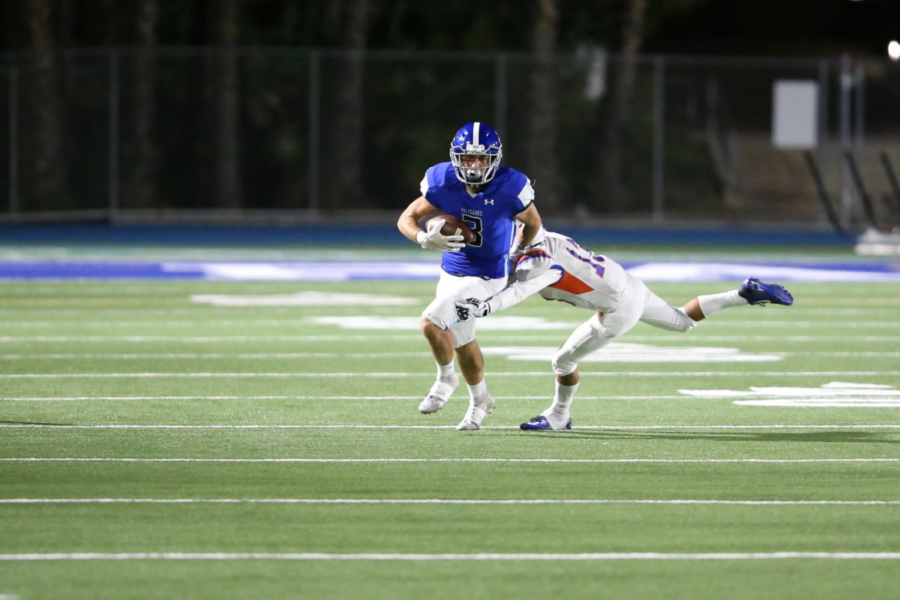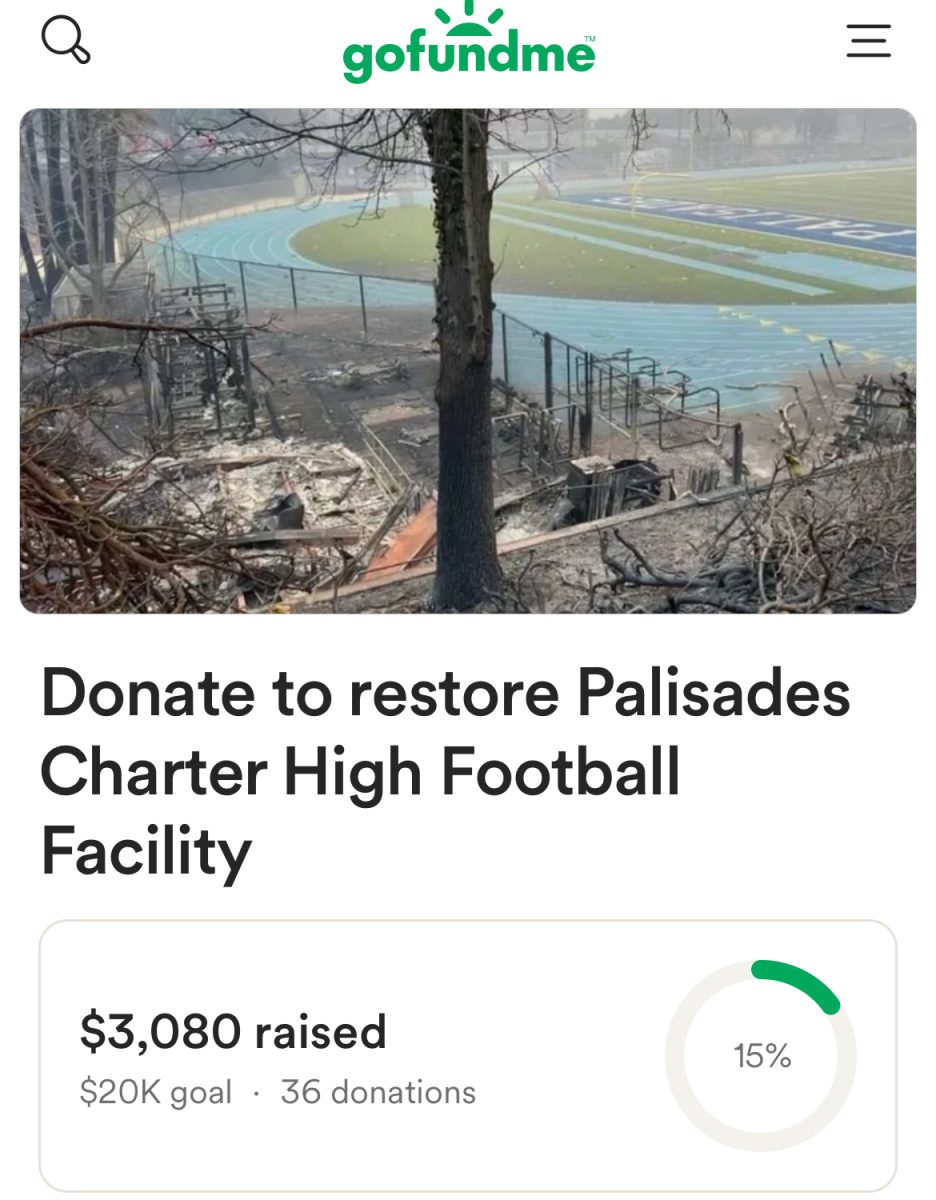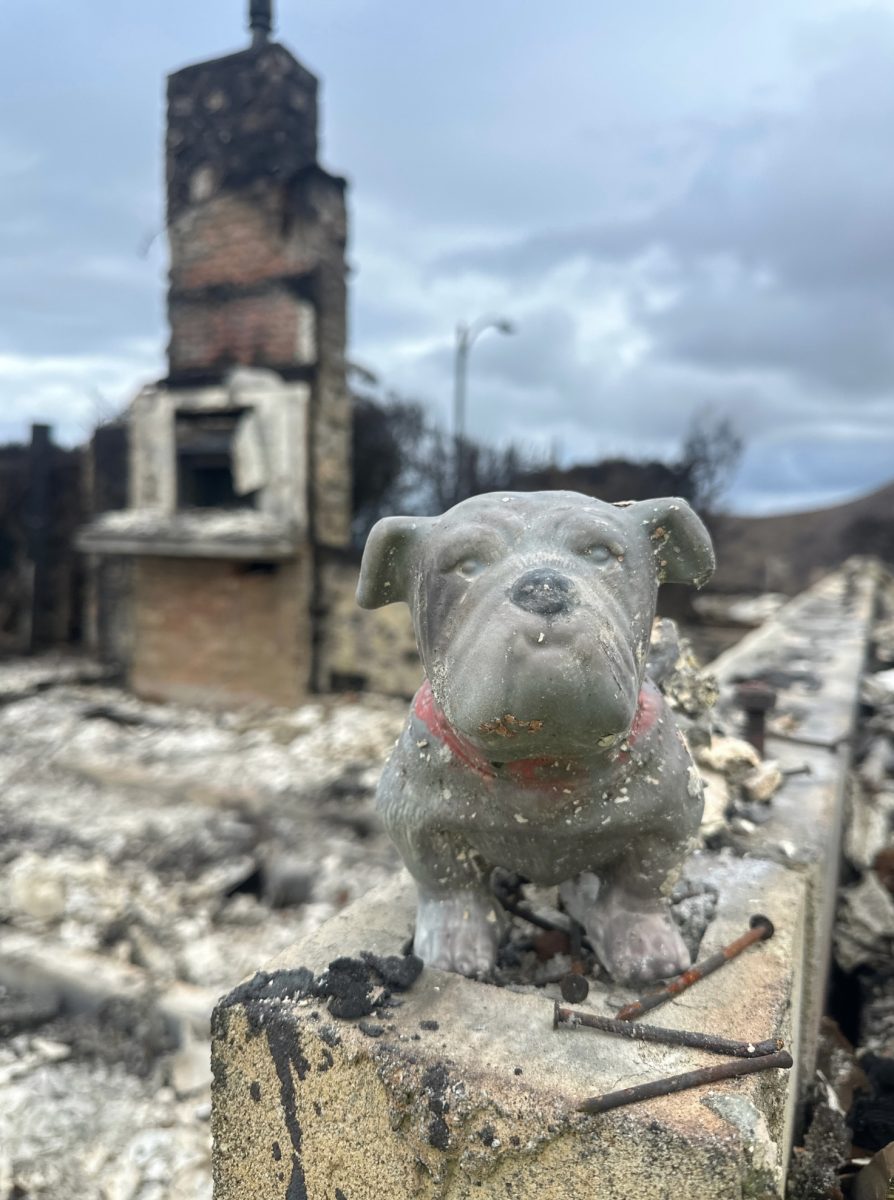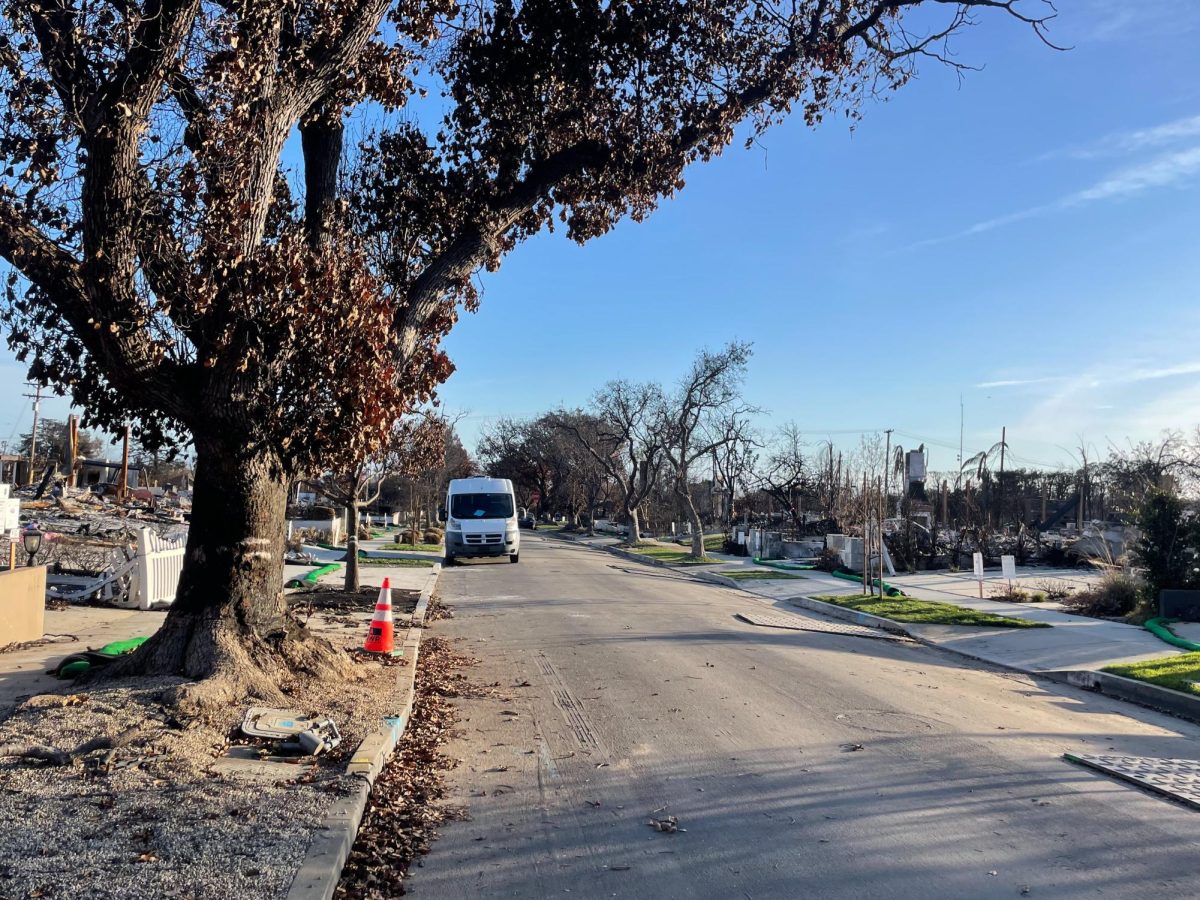No Longer Just a Game
The daunting realities of modern high school sports
November 26, 2018
Everyone remembers the days of AYSO and rec center basketball — the days when today’s high schoolers would dress up in oversized uniforms, think of a team name like the “Blue Dinosaurs,” play a few games, eat some orange slices and go home.
Since then, the concept of a sport has evolved in the eyes of our generation. Sports have transitioned from a way to hang out with friends and break a sweat to an activity plagued by intensity and pressure. Today, top athletes are trying to get recruited by colleges for their sports. Some are hiring personal trainers, regularly going to physical therapists and training for hours every day.
For example, during basketball season, junior point guard Anthony Spencer spends his weekdays training in Pali’s gym with his team until 5:30 p.m., then jumps straight into a weightlifting or a speed workout when he gets home.
For Spencer, this training is imperative in order for him to excel in his basketball career.
“You have to be used to the grind, so to speak, where you’re balancing school and basketball and balancing your health and basketball,” Spencer explained.
It makes sense: for some athletes, being serious about a sport is a path to get into college. A number of athletes view this hard work simply as part of enjoying the activity.
But there are cases in which it goes too far. Grit turns into injury and burnout. There’s a boundary between working as hard as possible to be successful and doing too much, and so many sports and athletes these days have crossed it.
A large part of the modern intensity of sports is the surrounding environment. Consider: You are one of the best players in AYSO, so you join a club team. You start practicing year-round. You make the high school varsity team. Both your club and school team want to be the best of the best, and so do you. You put pressure on yourself to succeed, and your coaches expect good performances from you, so you increase your training.
While this may appear to be a positive cycle, too often it leads to injury, stress and a premature end to a season — or even a career. Athletes who once loved their sport are quitting due to the pure mental and physical exhaustion of trying to perform in a high-pressure atmosphere. Clearly, in order to preserve the health of these competitors, something needs to change.
This pattern is evident not only in Spencer’s training routine, but also in the hours of Pali’s water polo team. During “hell week,” one of the first weeks of training for the season, the girls’ team practices from 5:45 a.m. until the start of school three or four days a week, as well as for two hours Friday afternoon and Sunday morning. Once the regular training starts, the team practices for two hours every day after school and from 10 a.m. until noon on Sundays.
For junior Nicole Kim, this amount of training is taxing both in and out of the pool.
“I think a lot of the girls are definitely drained from the practices,” Kim admitted. “Last year, for example, some girls were doing…a couple practices a day, including club practices after school, so I think when you take that into account, it’s a lot [of strain] on some of the players, especially those who are taking multiple APs or more rigorous courses.”
And this kind of schedule seems to be an alarming trend among multiple high-level sports.

Senior Will Janney, along with the rest of Pali’s football team, practices every day after school from 2:30 to 5:30 p.m.
When it comes down to it, so much training, whether it’s throwing a football over and over again or swimming lap after lap or lifting heavier and heavier weights, often leads to overuse injuries.
A 2011 study by C. Paul Van Wilson and Evert Verhagen titled “A Qualitative Study on Overuse Injuries: The Beliefs of Athletes of Coaches” analyzes interviews with athletes and coaches who had experienced overuse injuries to identify opinions regarding primary causes of these problems.
Every study participant attributed overuse injuries to personal behavior, relating them to statements such as “having too much of a drive,” “not coping adequately with pressure” or “always giving it all during training.”
Spencer is currently dealing with a back injury. “Every athlete has nicks and pains along the way,” he stated. “It goes too far when you start playing when you’re injured and making that injury worse.”
Kim’s also seen the effects of high-volume training amongst her teammates and herself.
“I think especially with swimming there’s a certain point that people reach where you’re not even getting faster and you kind of just level off,” Kim explained. “If we were to continue doing what we are doing right now [with ‘hell week’] and we carried that on throughout the entire year, [while] a lot of girls are losing sleep from having to wake up so early, it would reach a point where it’s not even benefitting anyone anymore and it’s just completely detrimental to everyone’s health, social life and academic life.”
According to the NCAA, only two percent of high school athletes receive scholarships to compete in college. Is it truly worth it to push these athletes to their breaking points when it will help hardly any of them get into and pay for college? Furthermore, even if students do get scholarships, how are they supposed to excel in collegiate sports if they are already dealing with exhaustion and injuries in high school?
It’s a pressing issue that goes deeper than limiting daily practices and training. Yet in the meantime, Pali’s athletes strive to find a way to stay in the game — a method of managing the pressure to perform while still maintaining health and longevity in their sport. After interviewing some athletes around Pali, it’s clear that the answer is finding the right balance between training enough and not training too much.
For those aiming to compete in college, the only way to survive the harmful and unhealthy environment of high school sports is to follow the path between burning out in the future and succeeding in the present, and the main way through which athletes do this is proper recovery.
Spencer understands the importance of recovery in a successful basketball career, as he always makes sure to rest one day each week.
“Do a lot of stuff that works on opening your muscles,” Spencer recommends. “Not just [lifting] weights and doing basketball, but also doing yoga, swimming and stuff to loosen up your body and joints. It lowers the risk of injury.”
Janney has similar experiences with balancing hard work and recovery.
“I feel like you should be doing everything safely that you can to really push yourself… without really hurting your body,” Janney explained. “[To recover], I take ice baths a lot, I get into the jacuzzi and I have a massage gun that I’ll use on my body to get the blood pumping.”
In the end, whether it’s through the more intense environment or the higher training volume or the increased emphasis on recovery, it’s clear that since we were kids playing AYSO, the dynamic of sports has greatly changed.
Unfortunately, the current conditions surrounding high school and club sports promote injury and stress, prompting many athletes to quit altogether. For those who continue to compete, it’s important for them to remember why they started the sport in the first place.
Spencer gushed, “I love it. I love basketball, and I love training and just trying to be the best I can be.” It’s this type of passion, not the hours spent in a gym, that should be emphasized in sports.
Moving forward, hopefully we can discover new ways to approach high school sports — ways in which athletes can push themselves in workouts while not feeling the pressure to push themselves into injury.
It’s time to go back to the underlying passion for sport among athletes and end this age of overtraining.












